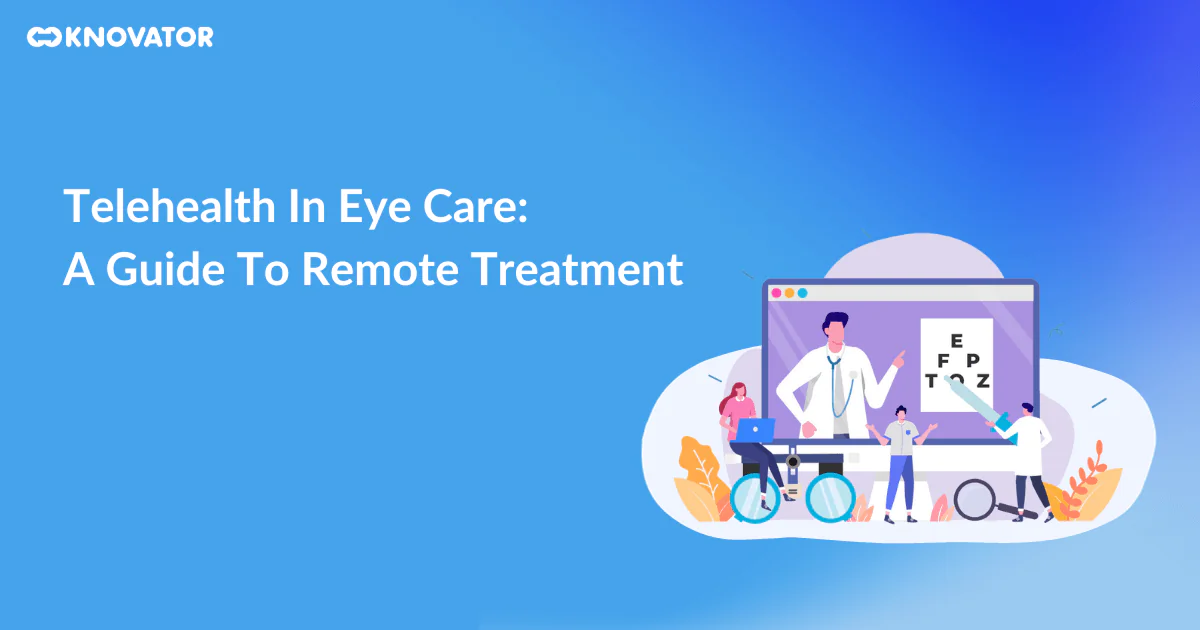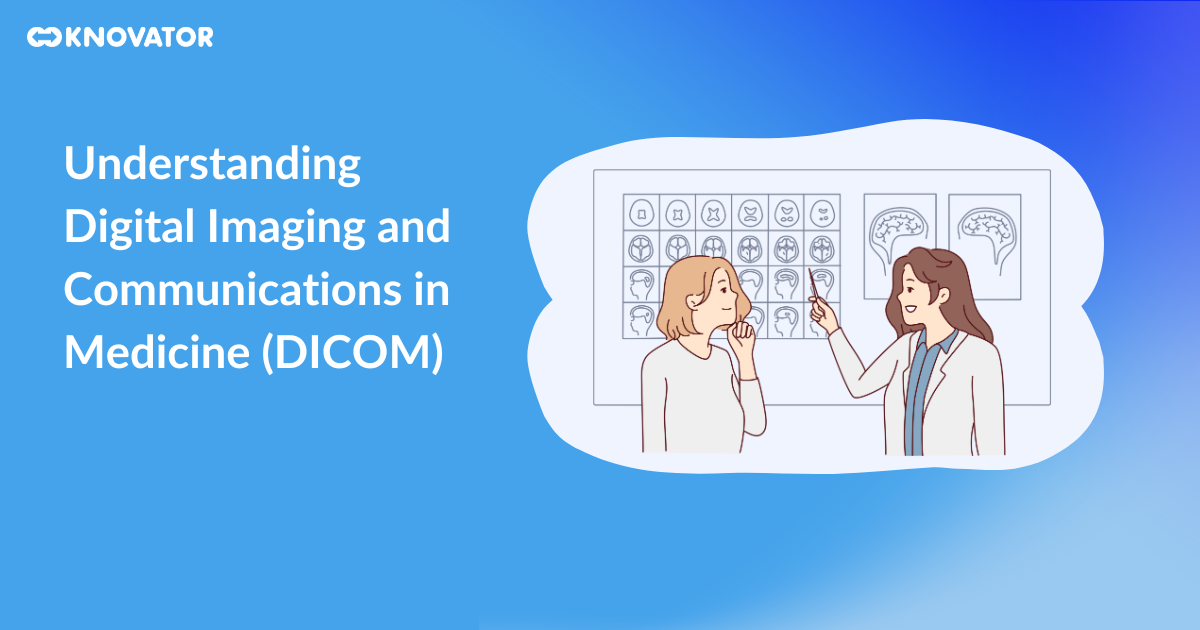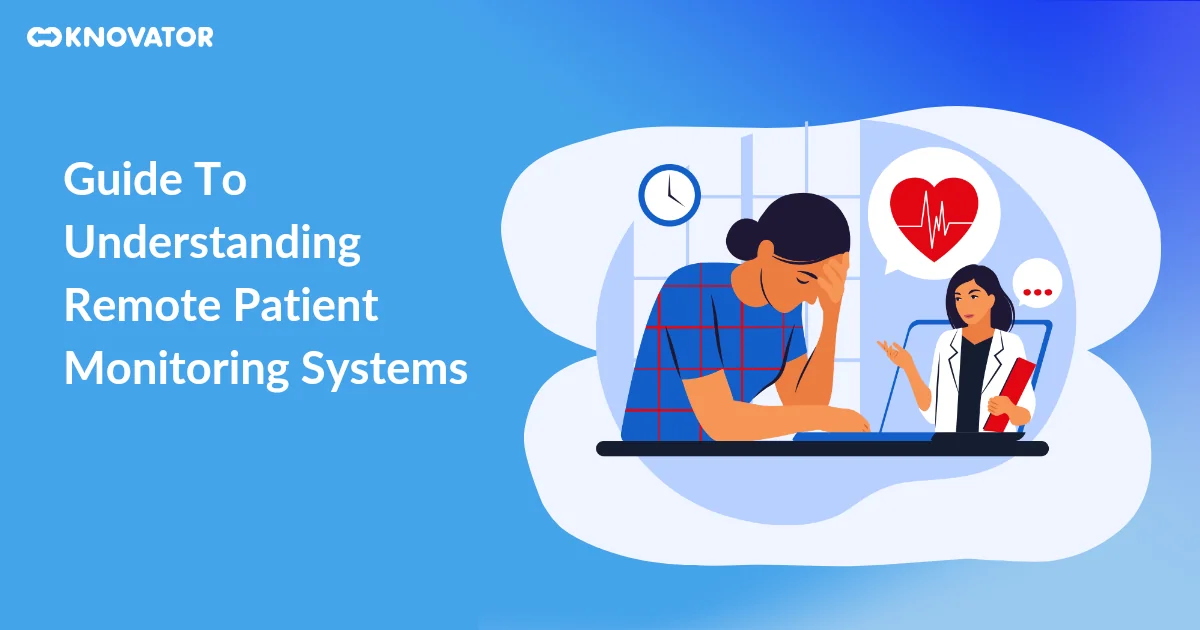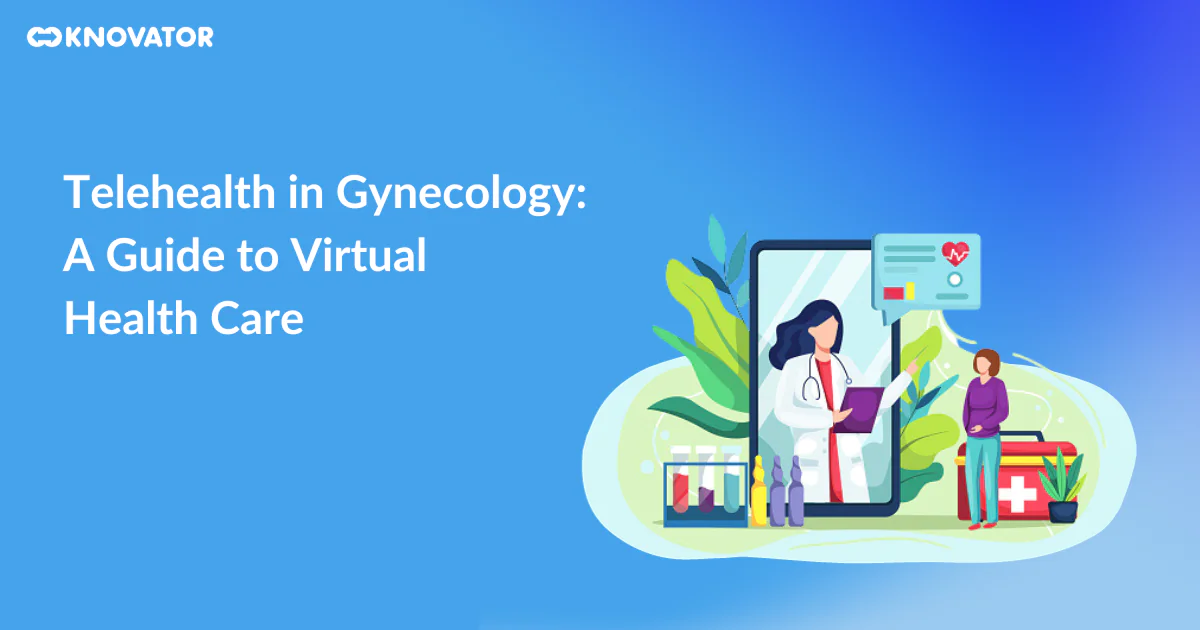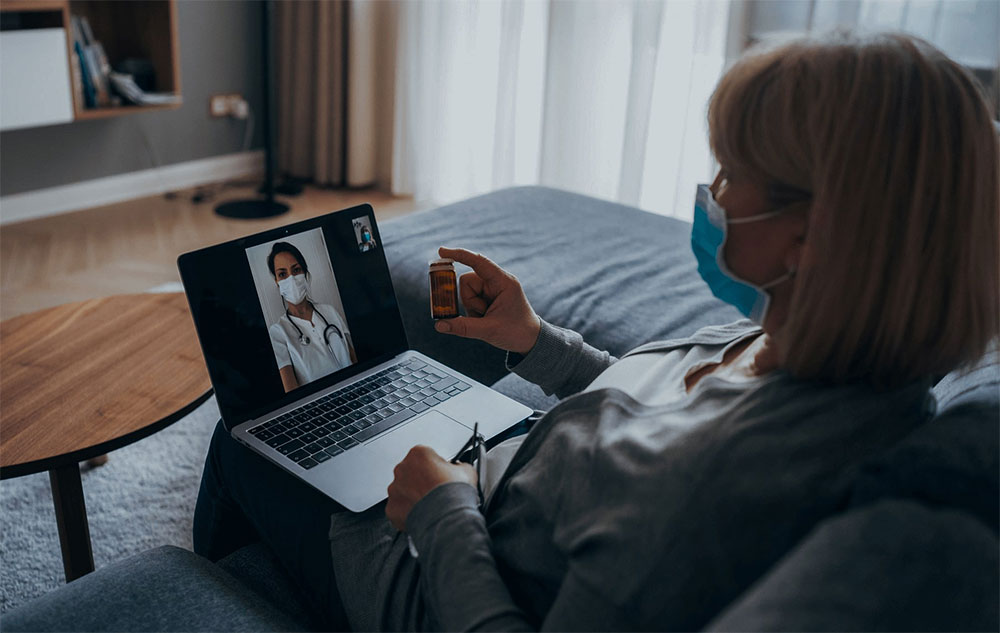Do you know there are innovative ways to slash the waiting times for specialized eye care, ensuring swift diagnosis and timely treatment guidance?
In this blog post we’ll explore the transformative power of telehealth in eye care, simplifying healthcare access for patients. Uncover the evolution, benefits, and challenges within modern healthcare’s remote eye care landscape.
Whether you seek eye care or are a healthcare professional interested in the telehealth revolution, this comprehensive guide will navigate you through the future of eye care.
History of Telehealth in Eye Care
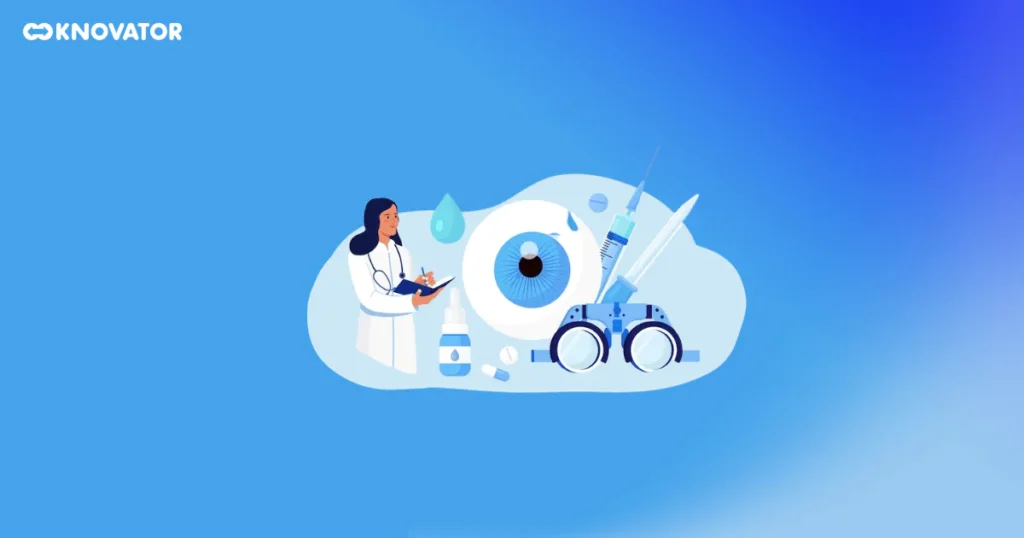 With the rapid growth of technology, Telehealth in the eye care—the discipline of telemedicine, has experienced a quick evolution.
With the rapid growth of technology, Telehealth in the eye care—the discipline of telemedicine, has experienced a quick evolution.
It has been a go-to tool for many eye-related illnesses, including screening, diagnosis, monitoring, and treatment.
Telehealth in eye-care began in the 19th century, capturing the first image of a human retina.
Advancements in cell phone technology enabled the creation of portable tools for taking eye images. Telehealth in eye care has been further improved by real-time collaboration, making it an essential part of modern eye care.
Technology has overcome geographical obstacles and increased access to eye exams and treatments. It improved coordination and communication among medical professionals.
Telehealth in eye care represents a significant change, making eye care more accessible and practical.
Benefits of Telehealth in Eye Care
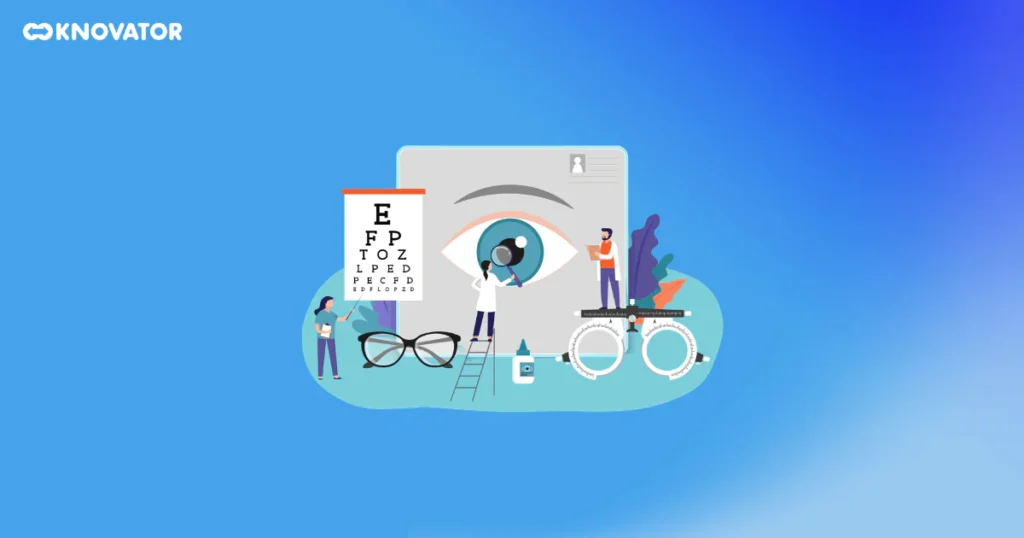 Telehealth in eye care has transformed the landscape of ophthalmology, redefining how eye doctors deliver services and how patients access treatments.
Telehealth in eye care has transformed the landscape of ophthalmology, redefining how eye doctors deliver services and how patients access treatments.
1. Accessibility and Remote Care
This innovative approach has bridged the gap for individuals in remote areas with limited access to healthcare, ensuring they receive crucial screenings and treatments without the constraints of geographical barriers.
2. Overcoming Distance with E-Medicine
E-medicine has ensured that individuals, regardless of their location, can access essential eye treatments, effectively overcoming the hurdle of distance limitations.
3. Streamlined Patient Experience
Patients benefit from a more streamlined experience, especially those residing in remote regions or facing mobility challenges. They can now access follow-up appointments, consultations, and necessary eye tests with ease, eliminating the need for extensive travel and long wait times.
4. Crucial Role during Pandemics and Beyond
The convenience of Telehealth in eye care has been further underscored during challenging times like the COVID-19 pandemic, offering continuous care while reducing the risk of disease transmission.
5. Post-operative care and Chronic Condition Monitoring
Beyond initial treatments, Telehealth facilitates post-operative follow-ups and ongoing monitoring of chronic conditions. Doctors can adapt treatments promptly, offer immediate assistance, and prevent conditions from escalating, ensuring patients receive timely care.
6. Technological Advancements Driving Progress
Technological advancements have been helpful in enhancing Telehealth in eye care, enabling real-time communication and instant diagnostics, and leveraging smartphones with advanced cameras for eye examinations. This evolution has significantly expanded the scope of patients that doctors can effectively treat and monitor.
Telehealth in Eye Care Advancements
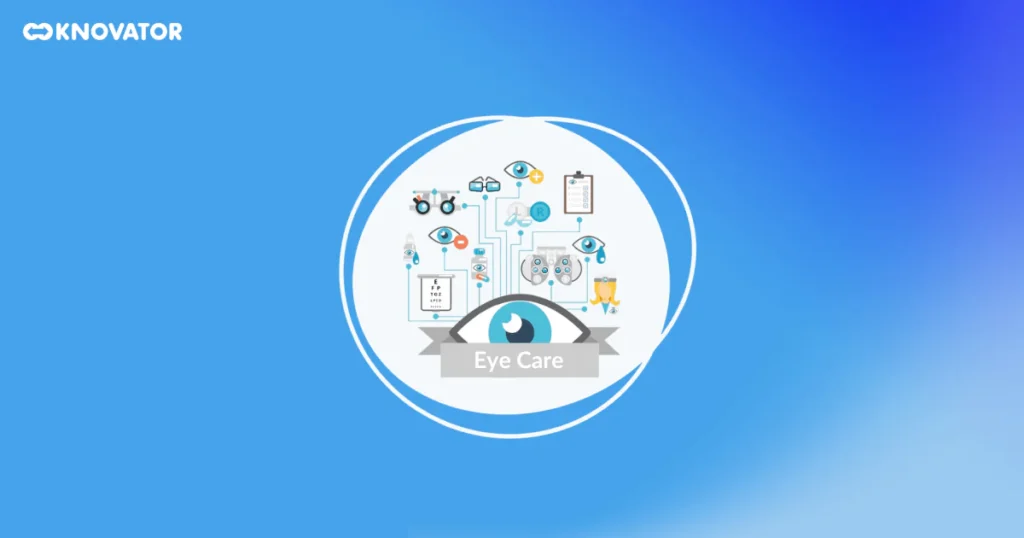 The rapid evolution of technology has brought tremendous developments in Telehealth in eye care.
The rapid evolution of technology has brought tremendous developments in Telehealth in eye care.
Use of cell phones: Cell phones with good cameras now serve as portable tools for doctors. They can examine and capture detailed eye pictures.
Consultation from anywhere: The ability to offer top-notch tests and consultations to patients, no matter where they are, has made eye care more accessible.
Real-time communication: Furthermore, real-time communication tools have transformed Telehealth in eye care by enabling immediate connection between ophthalmologists.
Doctors can share pictures and medical information and ask for opinions.
Also, they can have fast patient consultations using these platforms.
This has made remote eye care more effective and accurate. It also improves communication between patients and healthcare professionals, ensuring their needs.
A more significant number of people can now get high-quality eye treatment because of telehealth in eye care. People who have trouble moving or live in areas with few services can now use remote tests, diagnoses, and treatments for their eyes.
During emergencies like the COVID-19 pandemic, when limiting in-person visits is crucial, remote medical services come to the rescue.
Overall, telehealth in eye care has seen significant changes due to rapid technological advancements.
Smartphones and instant communication systems have played a crucial role in this transformation. These advancements have made remote eye care more effective, accurate, and accessible.
Now, patients can receive the screenings, diagnosis, and treatment they need, no matter where they are.
Limitations and Challenges
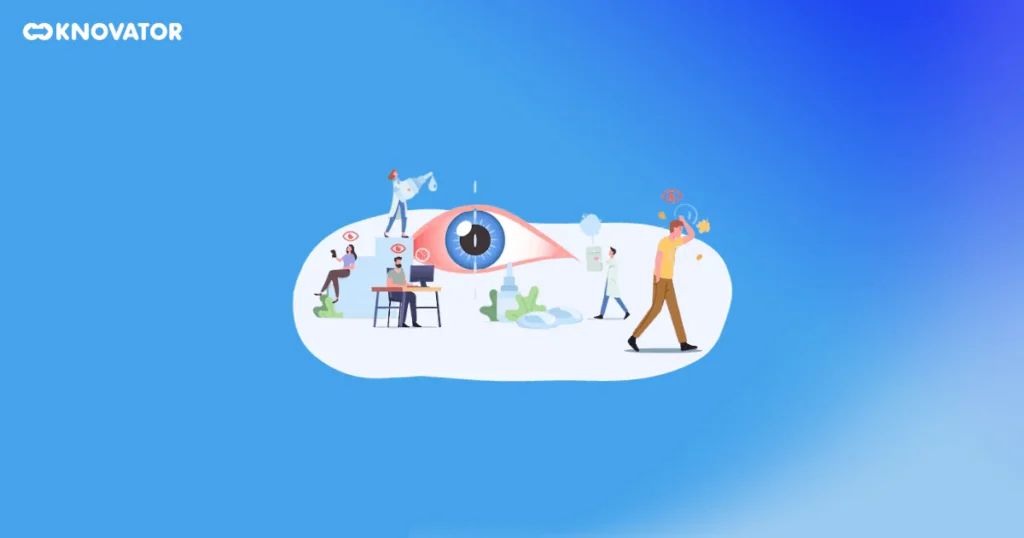
Embracing telehealth in eye care has revolutionized accessibility and effectiveness in healthcare services. However, amid these advancements, limitations and challenges persist, hindering its seamless implementation.
1. Limitations in Remote Procedures
Telehealth in eye care encounters constraints in conducting comprehensive exams and performing intricate procedures remotely. Complex surgeries necessitate in-person presence, highlighting a significant gap in remote healthcare capabilities.
2. Technological Restrictions
Inadequate internet connectivity, especially in remote areas, poses a hurdle for real-time collaboration between patients and doctors. Additionally, limited access to advanced tools and equipment restricts the scope of services that can be delivered remotely.
3. Data Security and Privacy Concerns
Ensuring the confidentiality and security of patient data in the online realm remains a pressing challenge. Unauthorized access to personal and medical information underscores the need for robust privacy laws and encryption measures to safeguard sensitive data.
Addressing these challenges requires concerted efforts in technological innovation, research, and collaboration between medical professionals and technology experts. Advancements in portable tools and remote surgery methods hold promise for expanding the reach of online eye care, enhancing accessibility while ensuring patient privacy, and delivering quality care.
Future of Telehealth in Eye Care
 Online eye care is getting better thanks to new technology and more people using it. This technology will help improve remote eye exams, allowing for detailed check-ups from a distance. Artificial intelligence and machine learning are big steps forward in eye care. They can analyze eye images, help with diagnosis and treatment plans, and find potential risks. These tools make online eye care more accurate and faster, assisting doctors in giving better, personalized treatment.
Online eye care is getting better thanks to new technology and more people using it. This technology will help improve remote eye exams, allowing for detailed check-ups from a distance. Artificial intelligence and machine learning are big steps forward in eye care. They can analyze eye images, help with diagnosis and treatment plans, and find potential risks. These tools make online eye care more accurate and faster, assisting doctors in giving better, personalized treatment.
Healthcare systems are starting to include telehealth services. This will make it easier for different healthcare providers, like regular doctors and eye specialists, to work together. This teamwork is expected to lead to better results for patients and improve their quality of life.
However, online eye care still faces challenges. Protecting patient privacy and data security is important, and some tests and treatments still need a person to be there in person, which can be tough.
Solving these issues is crucial for online eye care to keep improving and changing how eye care is done, benefitting people everywhere.
Choosing the Right Telehealth Service for Eye Care
 When picking an online eye care service, it’s important to consider various factors to ensure the best care for patients.
When picking an online eye care service, it’s important to consider various factors to ensure the best care for patients.
Selecting a provider with a proven history of offering excellent Telehealth in eye-care services is crucial.
An essential factor to consider is the level of experience the services ophthalmologists have.
Choosing a provider with skilled and experienced eye doctors who can diagnose and examine patients is crucial.
It’s essential to consider how easy it is to use the telehealth service. Patients should use the platform with clear instructions, simple interfaces, and quick access to help. These features are essential for a good experience. An easy-to-use platform ensures patients can interact with Telehealth in eye care services. It allows them to receive the care they need without unnecessary complications.
When selecting a telehealth provider, it’s crucial to focus on patient privacy and data security.
Choosing a service that follows strict privacy rules and has strong security to protect patients’ information. This commitment to privacy and security brings peace of mind to patients and providers.This includes secure storage for patient data, encrypted communication, and following privacy rules.
Telehealth In The Eye Care Enhances Coordination Between Medical Specialists
The delivery of eye care has been completely transformed by telehealth, especially Telehealth in eye care. It removed distance barriers and made healthcare more accessible. Additionally, it improved collaboration among doctors and provided valuable help during difficult times.
Telehealth in eye care has a promising future due to increasing acceptance and technological advancements. Despite its challenges, the field is evolving.
Choosing the right telehealth provider is essential as it explores the potential of services.
Prioritizing patient care, convenience, and security is crucial for a successful telehealth experience.
By telehealth, it guarantees that everyone has access to high-quality eye care anywhere.
FAQs
1. What is Tele-Optometry?
Tele-optometry is the practice of providing remote eye care using technology. It involves the remote diagnosis, treatment, and screening of eyes using telecommunication technology.
2. Are telehealth eye exams accurate?
Skilled eye doctors can perform precise remote eye exams with the correct technology.
Remember, some tests must be in person to diagnose and treat patients.
3. How do remote eye exams work?
During remote eye tests, patients can use smartphones to take pictures and videos of their eyes. Eye doctors can check and diagnose the patient’s condition using these safe photos.
Healthcare workers can collaborate and get expert advice thanks to real-time communication tools.

